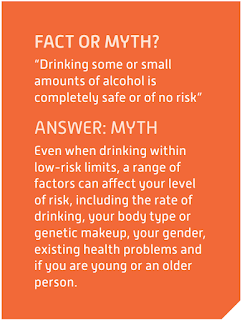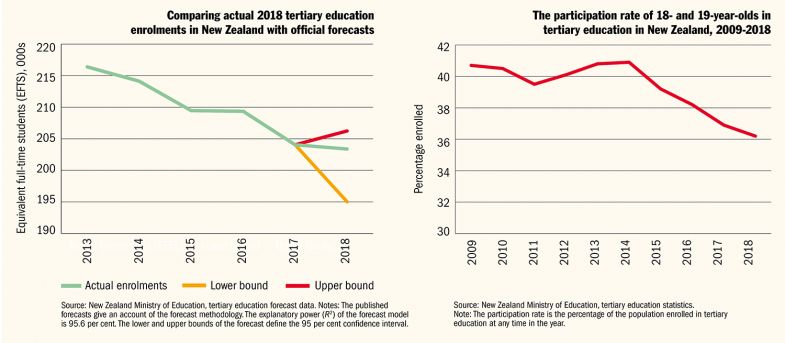Here are a collection of stylised facts about health insurance in New Zealand. At least I think they're stylised facts. Call them Eric's perhaps-incorrect understanding of the world.
Together, I wonder if they make sense.
- The public health system covers a lot of stuff, and PHARMAC subsidises the most cost-effective drugs;
- There are lots of newer drugs that PHARMAC doesn't subsidise. It can take a while for drugs to be registered with MedSafe for use in New Zealand, it can take a while for a registered drug to be sent to PHARMAC for consideration, it can take a while to run the CBA on drugs once an application is made, and it might take a while for any particular drug to hit the priority list. Note that this is not at all a critique of PHARMAC.
- The CBA that PHARMAC runs will have a variable threshold because different drugs will come in different years; they get the most cost-effective combination of drugs given their budget for the year, which can mean that the dollars-per-QALY (quality-adjusted life years) cutoff varies. Again, that isn't a PHARMAC critique, it's something that just happens when you've got a fixed budget every year and you can't shift funds across years.
- Leaving aside that dollars-per-QALY can vary considerably across sectors of regulation, the amount that's chosen will reflect some social preference, and individuals may have personal willingness to pay for QALYs that are higher than that, or they may be more risk averse.
- Given 1-4, you would expect that people with a higher willingness to pay for QALYs or other health outcomes would be purchasing health insurance with fairly extensive coverage of pharmaceuticals that aren't on PHARMAC's list. For example, suppose that your opportunity costs of time are much higher than average and a funded treatment requires a lot more time in-hospital while an unfunded one has more opportunities for self-management. You might be more willing than most to pay extra to not have to show up at hospital all the time - and to buy insurance on that basis.
- About a third of Kiwis have private health insurance. Health insurance providers do not seem to compete extensively on coverage of non-subsidised drugs - or at least I've not seen the ads for it. Except when it comes to cancer. But there are lots of conditions out there that are not cancer. The main thing that folks seem to look for in private health insurance is getting access to a nicer hospital room and access to specialists to avoid waiting lists in the public system - and presumably coverage of a greater range of cancer medications. Southern Cross does offer a policy providing a lump-sum payment of up to $300k in a critical illness event (cancer, cardiac, organ transplant, loss of independent living, functional loss or stroke), but there may be other areas where access to unfunded medications might be of value.
- Direct-to-consumer advertising of pharmaceuticals is legal in New Zealand.
I could be wrong about any of those points.
If the points are correct, I start wondering about calls to increase the PHARMAC budget.
PHARMAC as single-buyer is able to get deals that would be difficult for anyone else to get. But the things that it does cover should reflect willingness to pay for health - it just does it on our behalf because it can negotiate those better deals. At some point it's better to buy things other than healthcare; the cut-line should reflect some underlying measure of preferences.
If there were real effective demand for unfunded medications, beyond those covered by PHARMAC, wouldn't we see evidence of it in folks asking their insurers for coverage of a broader range of unfunded medications?
If they don't, it could be because they just don't know about those medicines. But insurers could advertise on the basis of their coverage of a more extensive list. And we don't see that, or at least I haven't seen it. And I've done enough google searches on health insurance when writing this that I should be getting targeted ads for it by now.
Maybe you think that the health insurance market is too concentrated so there isn't sufficient competition among them. But there's the alternative route: direct-to-consumer advertising is legal in New Zealand. The supplier of some new drug can go over the top, advertise it directly to consumers, and suggest that they not only ask their GP about it but also ask their insurer to add it to their list in case they ever get that condition. Doctors seem to hate that advertising -
they keep wanting it to be banned. But it isn't currently banned, and I've not noticed many of those ads.* And if they show up in places I haven't noticed, they haven't led to insurers competing on coverage of unfunded pharmaceuticals.
So the remaining possibility is that there just isn't that much effective demand for those drugs. And if that is the case, even among those who can afford private health insurance, then it substantially weakens the case for large expansions in what PHARMAC covers, except potentially in the interval where the drug would be worth it under the deals that PHARMAC could make, but not under the deals that a private insurer might get. And it just doesn't seem plausible that everything that isn't cancer winds up in that interval, does it? It seems more plausible that actual willingness to pay for that stuff in a country that's rather poorer than the ones that set the pace of medical innovation. But it would also then seem really really weird that there aren't people too poor to self-insure for the the expensive unfunded pharmaceuticals, but unable to afford to buy insurance for it. Why wouldn't we see even half of those going for private health insurance going for plans including far more extensive coverage of unfunded drugs?
Another potential explanation is that an insurer would take just as long to evaluate a drug as PHARMAC and come to the same decision, so it's pointless. But I understand that ACC can and does cover non-PHARMAC subsidised drugs that are registered either here or abroad - and the classes of cases that ACC can cover is far more limited than could be covered under private insurance. Basically - if it's a drug that treats something that was due to an accident, ACC can consider it. It can also consider weird cases where a delay in a cancer diagnosis gets considered to be an accident (which starts seeming like a stretch of ACC, or something inviting delays in diagnosis).
There are potentially other explanations.
Is the market for health really about health? Maybe you could go to a more sociological explanation and say that people just expect that the government's covering the stuff that's really worthwhile, and there's no point in bothering with the other stuff; private health insurance buys the feeling of having done the right thing and the obvious benefits of shorter waiting times, but folks are overly confident that whatever the government's bought on their behalf is good enough - and so over-discount any advertising they might see. In that case maybe some
true preference for health isn't being expressed because of mistaken beliefs about whether public funding might match the preferences of those willing to spend more per QALY. But again, you still need advertising to be ineffective right?
So I still don't have a great explanation about why we don't see insurers competing on coverage of pharmaceuticals not covered by PHARMAC; my expectation is that there's little effective demand, but I'm not confident in that explanation. Are any of my quasi-facts less truthy than I'd thought? Or have you a better explanation for them?
For what it's worth, we have private health insurance coverage that we started when the kids came along. The policy has a very very high excess and so it is very cheap - it's basically catastrophic coverage. I see zero point in insuring against things you can cover within your credit card limit. But the policy had and has less coverage of unfunded drugs than I might have hoped for - and especially for a catastrophic-care kind of policy. And I've not seen policy options since that had more extensive coverage.
* I think I learned about the chicken pox vaccine because of an ad. It might have been from friends in the States who'd gotten the vaccine for their kids though. Either way, it sure wasn't from our GP. She was a very nice GP, but I was colossally disappointed on this margin. We rocked up and asked about the chicken pox vaccine (as soon as we heard about it) and whether it was yet available in NZ. She said that it surely was, "but you know you'd have to pay for it out of pocket". I was utterly aghast. A week out of work for a kid with the chicken pox is way more expensive than the vaccine, even leaving aside the potential for later-life shingles and pain and suffering for the kid. Of course we'd have wanted to have paid for it had we only known about it! I guess she'd had too many patients just uninterested in things they had to pay for. But we immediately asked what other vaccines she hadn't bothered telling us about. She noted one that prevented some kind of gastro disorder, so we got that vaccine too. They both wound up being funded a few years later. I would have been furious if the kids had wound up with preventable chicken pox just because the GP didn't think it worth bothering to mention the existence of things that you had to pay for. The chicken pox vaccine is cheap and you definitely want it for your kids regardless of whether the government pays for it. Other conditions - the relevant drugs will only be needed if you get the condition, and it could well be worth getting insurance that covers the drugs relevant to the condition, but you need to find out about their existence somehow, so you know to make sure your insurance covers it (or to know that your insurance should cover a broad range of unsubsidised medicines).
Anyway, all of that is to say that you just can't trust your GP to come out and tell you things that you should know about but advertising might help fill the gaps.







